UX/UI Design
Our top 1% LATAM UX designers create intuitive user experiences and interfaces that drive engagement and increase conversions. They craft seamless, visually appealing solutions that enhance usability and align with your business goals.

Trusted by more than 100 companies across the globe:







UX /UI Design Services We Provide
User Research and Analysis
User research is essential to the UX design process. We use tools like Hotjar and Google Analytics to understand user behavior, along with traditional methods like user interviews, ethnographic studies, and surveys. This evidence-driven approach ensures our designs reflect actual user needs and preferences, not guesswork.
Custom User Experience Design
Craft seamless and intuitive digital experiences tailored to your audience's needs. Guided by cognitive psychology and design thinking, we map out user flows and use tools like Miro and Figjam for collaborative ideation. By mapping customer journeys, we identify pain points and opportunities to delight users.
UI and Interaction Design
Transform rough concepts into beautiful, functional user interfaces. Using tools like Adobe XD and Figma, we design interfaces where every button and icon has a clear purpose, ensuring user interactions are both aesthetically pleasing and meaningful.
Wireframing and Interactive Prototyping
Before diving into development, we visualize the product's architecture using tools like Axure and InVision. We create wireframes to lay out the blueprint and then transform them into interactive prototypes. This approach helps stakeholders get a tangible feel of the product and allows us to identify and address potential edge cases and dependencies early.
Web and Mobile App UX/UI Design
Whether you need a responsive website or a native mobile app, we collaborate with front-end developers to ensure smooth performance and consistency across all devices. Using frameworks like Bootstrap for web apps and SwiftUI for iOS apps, we create adaptable UIs that deliver a delightful user experience.
CASE STUDY
Better Trucks partnered with NetForemost to enhance its delivery services. Over two years, our dedicated teams improved API reliability, enabling faster, transparent deliveries and an enhanced customer experience.

Key Facts about Outsourcing QA and Software Testing
Often, internal teams may feel overwhelmed or lack the tools to craft and refine user experiences. Outsourcing your UX design services can be a strategic solution, offering both cost savings and access to specialized expertise.
Here are 6 key reasons to consider outsourcing:
- Collaborate with Top Specialists: Gain access to UX experts with diverse industry experience and innovative approaches, resulting in beautiful, user-friendly designs aligned with best practices.
- Focus on Your Strengths: Allow your company to concentrate on its core activities while the design experts handle user experience aspects.
- Stay Up to Date: Benefit from the latest UX trends and best practices, ensuring a more engaging product and valuable insights.
- Mitigate Risk: Leverage established processes and expertise to manage risk and adhere to regulations efficiently.
- Scale Faster: Adjust your engagement based on project demands with greater flexibility than relying solely on in-house designers.
- Save Money: Reduce costs related to salaries, benefits, tools, and other overheads, while gaining greater flexibility.
Good UX not only boosts user engagement but also enhances your brand’s positive impression. Attractive and intuitive interfaces reduce friction and improve conversion rates.
Conversely, poor UX can lead to user frustration, higher abandonment rates, and decreased engagement and conversions.
While good UX design benefits most industries, some have more critical needs. Here are examples:
E-commerce & Retail
- Need: Intuitive navigation, clear product displays, and streamlined checkout.How UX
- Design Helps: Enhances shopping experiences, reduces cart abandonment, boosts sales, and fosters brand loyalty.
Education & E-Learning
- Need: Engaging platforms that are easy to navigate and support multimedia formats.
- How UX Design Helps: Improves learning paths, dashboards, and interactive content, enhancing learning outcomes and user engagement.
Travel & Hospitality
- Need: Seamless review, booking, and reward platforms with smooth search and payment processes.
- How UX Design Help: Optimizes search filters, pricing displays, and booking processes, increasing booking rates and customer satisfaction.
- Entertainment & Media
Need: Easy content discovery, smooth playback, and personalized user experiences. - How UX Design Helps: Enhances engagement with recommendation engines, intuitive controls, and adaptive UIs based on user behavior.
SaaS (Software as a Service)
- Need: Efficient onboarding, clear dashboards, and easy feature access.
- How UX Design Helps: Guided onboarding, clear feature hierarchies, and feedback loops reduce churn and improve user satisfaction.
UX/UI Design Best Practices
Prioritizing user-centered design is essential for creating impactful and effective digital experiences. By focusing on the needs, preferences, and behaviors of users, this approach ensures that the design solutions are intuitive, accessible, and engaging. User-centered design involves ongoing research, user feedback, and iterative testing, enabling designers to craft solutions that resonate with users and solve real problems. This commitment to understanding and addressing user needs leads to higher satisfaction, better usability, and ultimately, a more successful product.
Embracing consistency in UI design is crucial for creating a cohesive and user-friendly experience. Consistent design elements, such as colors, fonts, and button styles, help users navigate your application with ease and predictability. By adhering to established design patterns and guidelines, you ensure that users can intuitively understand how to interact with your product, reducing cognitive load and minimizing confusion. Consistency not only enhances usability but also reinforces your brand identity, making your interface more recognizable and trustworthy.
Designing for accessibility ensures that your digital products are usable by people with a wide range of abilities and disabilities. This approach involves implementing features like high-contrast text, keyboard navigation, and screen reader compatibility to make sure everyone can interact with your interface effectively. By prioritizing accessibility, you create an inclusive experience that accommodates various needs, fosters a broader audience, and complies with legal standards. Accessible design not only improves usability for individuals with disabilities but also enhances the overall user experience for everyone.
Why Choose Netforemost for UX/UI Design

Rigorous Vetting Process
All of our bilingual tech talent undergo a thorough vetting process, including detailed interviews and skills assessments to evaluate their technical and interpersonal abilities. We ensure a swift onboarding process, typically within 2-3 weeks, to quickly integrate them into your team.
Top 1% of UX Designers
Access the top 1% of LATAM UX designers with extensive experience, having completed thousands of projects for over 500 clients since 2009. Our expertise spans more than 100 diverse sectors, showcasing our depth and breadth in delivering exceptional user experiences.
Backed by User Research
We eliminate guesswork in design by grounding our work in user research. This approach minimizes the risk of launching failed or underperforming products, ensuring that each pixel is placed with purpose and precision.
Our Process: Simple, Seamless, Streamlined.

Initial Consultation Call
We'll discuss your business goals, budget, timeline, and UX design needs during our initial call. Based on this, we'll determine the best engagement model for you, whether it’s staff augmentation, dedicated teams, or end-to-end software outsourcing.
Building Your Team
We'll create a detailed UX design plan tailored to your requirements and chosen engagement model. Additionally, we'll assemble a team of top 1% specialists and handle their onboarding.
Get to Work
Our UX designers will begin your project, providing regular updates with mockups, milestones, and prototypes. You'll stay informed throughout the design process, and you can scale your engagement as your needs change.
Frequently Asked Questions (FAQ)
User testing is a crucial part of the UX design process. It offers valuable insights into how users interact with interfaces. By using platforms like UserTesting and tools like Hotjar, UX designers can pinpoint pain points, validate design choices, and ensure the user journey meets business objectives.
UX design services bridge the gap between user needs and software functionality. Our team provides high-fidelity mockups, user research, and information architecture, guiding developers to create intuitive and user-centric digital products. Through a collaborative approach, we ensure a superior final product that aligns with both user expectations and business goals.
Though they are interconnected, the customer journey encompasses the overall experience a person has with a brand or business, spanning from initial awareness to long-term loyalty. On the other hand, the user journey concentrates on the specific interactions and touchpoints within a digital product, ensuring that each stage is tailored to meet the needs of the user.
UI design focuses on the visual and interactive elements of a product, such as graphic design and interface layout. User experience (UX) design, on the other hand, delves into usability, information structure, and the overall journey of the user. While UI design ensures the product looks appealing and functions well, UX design ensures it is user-friendly and effectively meets user needs. Together, they provide a comprehensive approach to creating engaging and functional digital experiences.
Information architecture is essential for organizing and structuring content within digital products. By creating a clear and intuitive layout, it ensures that users can easily navigate and find the information they need. Effective information architecture not only improves usability but also supports the user journey and contributes to achieving business objectives.



